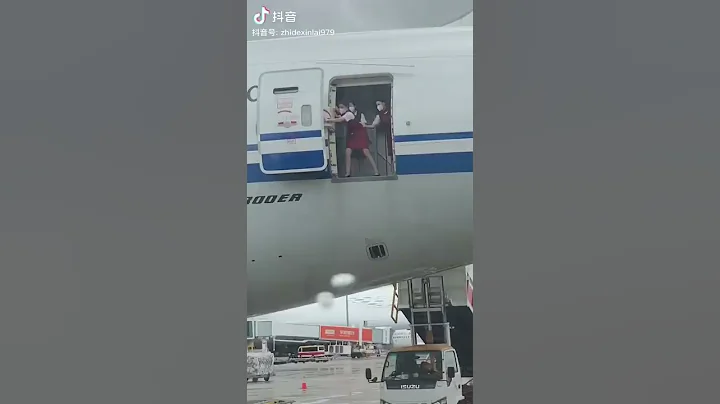Author: A Ma
Recently, the new generation main battle tank developed by Germany, the KF51 "Panther" tank, was unveiled at the European Defense Exhibition. This main battle tank is also the second fourth-generation main battle tank to be unveiled after the Russian Armata T-14.
Germany produced many advanced tanks during World War II. After World War II, with its strong industrial and technological strength, the quality and level of German-made tanks remained at the top of the world. Military fans are familiar with the Tiger and Panther tanks during World War II, as well as the postwar Leopard 1 and Leopard 2 main battle tanks, and the KF51 "Panther" tank launched this time is an inheritance of German tank technology. And development.

KF51
Performance
Rheinmetall was founded in 1889. It is the largest military industrial enterprise group in Germany. It mainly produces combat vehicle weapon accessories and defense products. It has produced Leopard 2, M1A1, M1A2 and other tank armored vehicles and self-propelled artillery Its main gun, its L55 smoothbore tank gun, is world-class in technology. The "Panther" tank unveiled at the Paris Defense Exhibition this time is a new generation of main battle tank developed by Rheinmetall with its own funds. It is also the second main battle tank named after "Panther" in German history.
The first-generation Panther tank, also known as the No. 5 medium tank , was developed and produced by Germany in response to the Soviet T-34 medium tank after Operation Barbarossa in 1941. The tank uses sloped armor and a long-barreled 75mm main gun. It was one of the most successful medium tanks in World War II.

The first-generation Panther
KF51 "Panther" main battle tank has a huge turret structure. It is powered by the same 1,500-horsepower liquid-cooled twin-turbocharged diesel engine as the "Leopard 2" main battle tank. It weighs 59 tons. In the past, the weight of Western main battle tanks, which often weighed 70 to 80 tons, was much lighter, so the maneuverability of this type of tank has been greatly improved.
The KF51 "Panther" main battle tank uses a 130mm L51 smoothbore tank gun as the main gun for the first time. It is equipped with an automatic loader. The killing distance is said to be 50% higher than the 120mm L55 tank gun. Other weapons include a 12.7mm coaxial machine gun and multiple RCWS remote-controlled weapon stations. The crew is usually three (commander, gunner and driver).

Turret structure
Its turret is also equipped with a drone launch cabin, which can launch drones for reconnaissance and launch cruise bombs. In addition, the tank is equipped with passive, active and anti-top attack protection systems. This requires an additional operator responsible for operating the active defense system and the drone.

Vertically launched UAV model
Advantages
KF51 "Panther" tank has been significantly improved in firepower, mobility, protection capabilities and other aspects compared with the previous third-generation main battle tank such as the Leopard 2A7 tank.
In terms of firepower: The 130 mm artillery equipped with this type of tank is currently the largest caliber tank gun in the world. The gun can use larger, heavier shells and have a longer firing range, and can fire kinetic energy armor-piercing projectiles and programmable ammunition.

The KF51
KF51 in the test is also the first tank equipped with a drone. It can launch reconnaissance drones vertically and launch HERO120 cruise missiles at an angle. This type of missile is a hovering rocket that can hover over the target area and attack autonomously after discovering the target. This type of missile can strike targets within 40 kilometers, effectively increasing the tank's strike range. In addition, the tank can also launch an undisclosed anti-aircraft missile, which is said to be effective against armed helicopters and drones.
In terms of mobility, the KF51 uses a diesel engine with the same horsepower as the Leopard 2A7 tank, but the former’s weight is significantly reduced, which means that the off-road maneuverability of this type of tank will be greatly improved.

Leopard 2A7
In terms of protection capabilities, a protection system that combines passive protection and active defense systems is adopted. In addition to the traditional additional armor and active defense system, the "TAPS" top attack protection system and the "ROSY" smoke shielding system are also specially installed to defend against top attacks. Although the turret is enlarged and has a large bomb nest area, thanks to active and passive protection technology, the KF51 will have better defense capabilities than the Leopard 2A7 and can effectively deal with attacks from anti-tank weapons and drones.

Loitering bombs on the turret
How to develop the next generation of main battle tanks?
After the end of World War II, main battle tanks have been successfully developed for three generations. Compared with the tanks during World War II, the first-generation main battle tank mainly enhanced its firepower, protection and mobility capabilities. On the basis of the first-generation main battle tank, the second-generation main battle tank continues to improve its firepower, shooting accuracy and protection level, and is equipped with night vision, three-defense and other systems.
The third-generation main battle tank was mainly developed and produced from the late 1960s to the 1990s. Most of these tanks are equipped with a 105-125 mm tank gun, which can fire sabot tail armor-piercing projectiles. They are equipped with advanced fire control system , which can achieve shooting while moving. They use composite armor , depleted uranium armor or reactive armor . , equipped with a high-power diesel engine or gas turbine . Representative models include the T-72 and T-80 series of the former Soviet Union, the M1 series of the United States, the British "Challenger", the French "Leclerc", the German "Leopard 2 series", the Japanese Type 90 and the Chinese Type 99 etc.

M1 tank
After that, the development of tanks has slowed down. So far, the development path of the fourth-generation main battle tank is still unclear. Russia is known as the world's first fourth-generation main battle tank. The Armata T-14 tank has not yet matured and was not used in this Russia-Ukraine conflict.
We can see from the regional conflicts in recent years that the rapid development of anti-tank weapons and increasingly mature drones. In the face of technology, tanks face huge challenges, but what is certain is that the next generation of tanks will definitely continue to enhance firepower, protection levels, information capabilities and maneuverability. The design will focus on using drones to enhance battlefield awareness. New technologies such as electrothermal chemical cannons, armored protection turrets (unmanned turrets), virtual vision, and oil-electric hybrid have appeared. Can the "Panther" tank still fight? The debate over whether battle tanks are still useful in modern warfare. The KF-51 "Panther" represents the highest level in the field of European tanks and is also an exploration of the development direction of future tanks.
Since the Russian-Ukrainian war broke out on February 24 this year, tanks and other armored vehicles on both sides have suffered heavy losses. In the first phase of military operations, the Ukrainian army faced the Russian assault and frequently used various types of anti-tank missiles to attack Russian tanks and achieved great results. Videos and photos of tanks being destroyed continue to appear on various social media.

In the second phase of the military operation, the two sides extensively used drones to provide target instructions for artillery during the stalemate, which also posed a huge threat to the tanks of both sides. Under such circumstances, discussions continue to arise about whether tanks can still adapt to modern warfare.
In modern land warfare, although tanks have many weaknesses, they are still the best combination of firepower and maneuverability. As an armored monster on the land battlefield, its role in attacking fortresses and breakthrough operations cannot be replaced.In addition, during the Russia-Ukraine war, the tanks invested by both sides were not advanced in performance. were mainly early third-generation or second-generation tanks. They lacked active protection systems and battlefield awareness capabilities, and their information combat capabilities were low. plus The Russian army lacked close coordination between tanks and infantry in its early operations, so the role of tanks was not obvious enough.
There is no doubt that when developing the next generation of tanks, the gains and losses in the use of tanks in the Russia-Ukraine war will be learned, and the tanks' combat capabilities will be continuously improved to adapt to future battlefields.

KF-51 Black Panther
It remains to be seen whether the "Panther" main battle tank can become Germany's next generation main battle tank, but its design has obviously absorbed relevant experience, enhanced firepower and range, and equipped Loitering missiles and reconnaissance drones are equipped with advanced active defense systems, which improve cross-country maneuverability and information combat systems. It can be said to be a comprehensive and targeted upgrade in response to modern warfare, and it is also a bold attempt.











